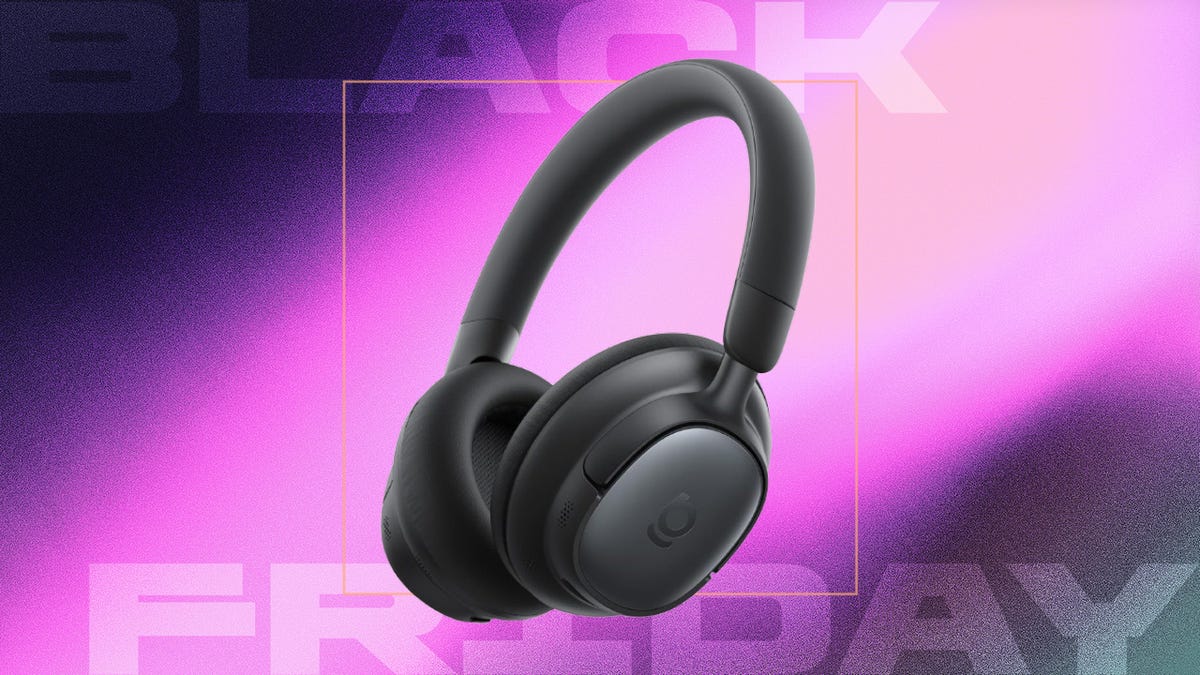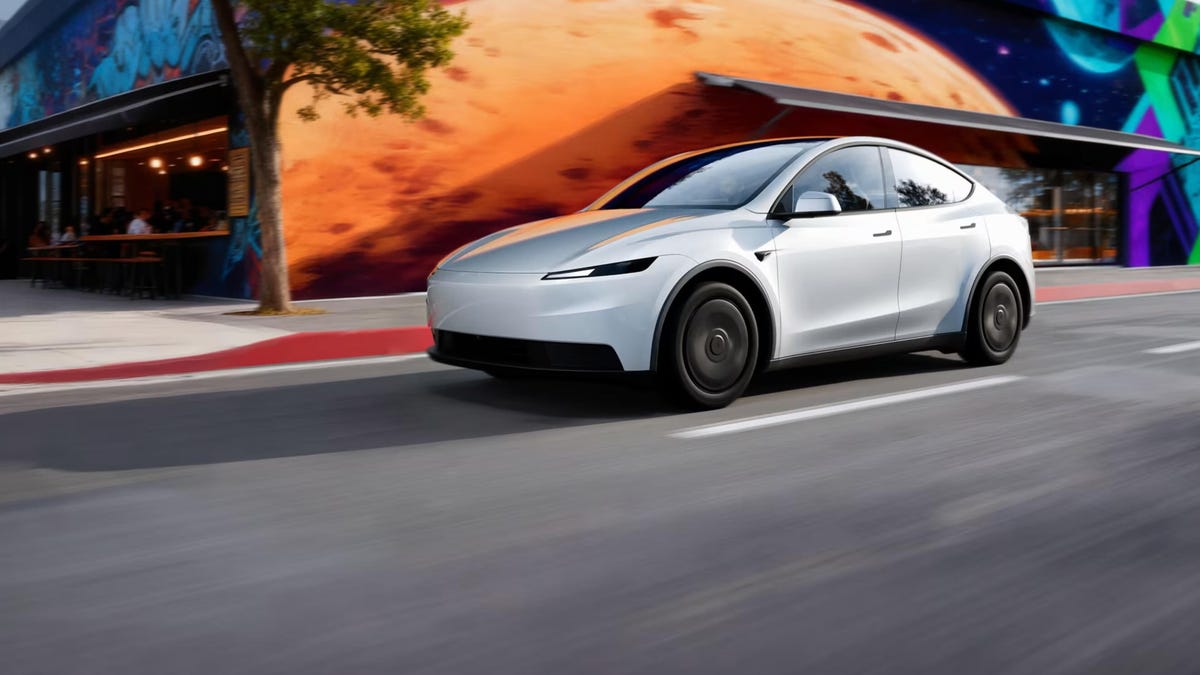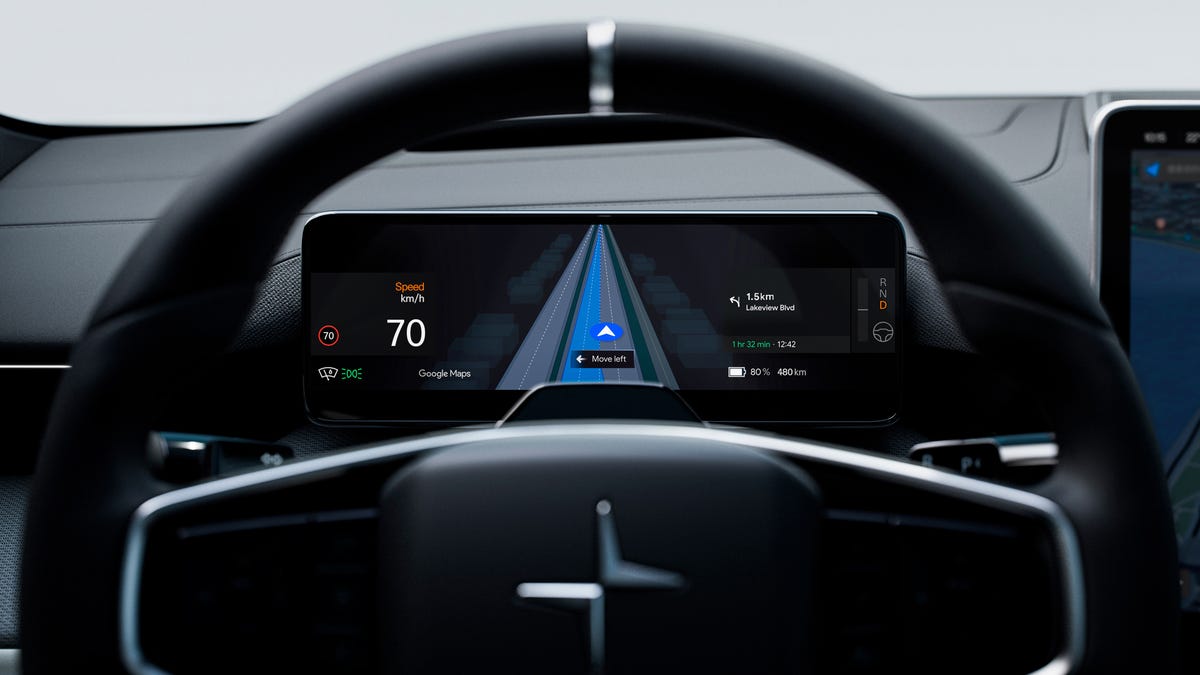Technologies
83% of US Adults Still Choose Laptops for Work and School Over Sleek Smartphones and Tablets, CNET Survey Finds
Most US adults want faster, longer-lasting laptops, but one generation is chasing style over specs.

Upgrading to a new laptop can feel like a never-ending rabbit hole. Even when you know what you need, choosing the best features, specs and design within your budget can be a bit overwhelming, to say the least.
Between back-to-school season and the holidays fast approaching, now’s the time to shop around for a deal on a new laptop. But what are US adults looking for when upgrading their laptops, anyway?
CNET’s new laptop survey found that nearly half of US adults are upgrading for better speed (45%) and battery life (44%). But that’s not all. One generation is looking beyond the specs and opting for sleekness and aesthetics instead — more about that below.
Here’s exactly what laptop owners are looking for, what experts think about the findings and what they recommend before you buy your next one.
Over half of US adults use laptops for creating and viewing documents
Even though smartphones and tablets are capable of letting us write essays and notes, US adults lean on smartphones for organization (66%), note-taking (48%), gaming (47%), and streaming shows and movies (44%). CNET found that laptops are used for work and educational tasks like creating and viewing documents (52%), creative work (33%), test-taking (31%) and studying (33%). Here’s a closer look.
Why not tablets instead of laptops?
David Carnoy, a CNET executive editor and tech expert, said most people have room for two primary devices, mainly a smartphone and laptop. Most don’t use a tablet for day-to-day activities or more tedious tasks.
«Tablets have been relegated to second-tier status in terms of must-have productivity tools and are viewed by a lot of folks as entertainment devices,» said Carnoy. «We’ve been waiting for tablets to become real hybrid devices that are true laptop replacements.»
One exception to a tablet functioning like a laptop is the Microsoft Surface Pro models that run Windows 11. However, Carnoy pointed out that they’re pricier — even before adding accessories to make the tablet work more like a laptop.
Performance matters more than aesthetics for most US laptop owners. Laptop owners looking to upgrade aren’t motivated to upgrade for fun features like messaging upgrades and artificial intelligence capabilities. By the numbers, only 10% of US adults get a new laptop for AI capabilities, while 12% upgrade for external device support and 7% upgrade for a new color.
Instead, nearly half of US adults are considering a new laptop for better speed (45%), while 44% want better battery life, according to the survey. Other top motivators include storage (39%) and screen quality (28%).
Read more: I Tested AI for Its Best Laptop Picks. I’m Glad I Fact-Checked Before I Bought
One exception: Gen Z favors design and sleekness
Like most US adults, Gen Z upgrades laptops for common reasons, like battery life (55%) and storage (50%). But aesthetic elements have a special appeal to this generation.
Gen Z is motivated to upgrade their laptops for sleekness and design appeal, such as screen quality (37%), design sleekness (25%), pen support (11%) and color options (10%). Experts pointed to a few reasons for Gen Z’s motivating factors.
Many of today’s laptop processors are powerful, so choosing the right processor has become less important compared to choosing a laptop with aesthetics that speak to you, said Matt Elliott, CNET senior editor and computer expert.
PC Mag’s consumer personal computer expert, Matthew Buzzi, added that Gen Z liking aesthetics more than other generations could be a broader trend on the horizon because there’s a baseline for what most laptops offer, and the aesthetic and design are what set them apart.
«Aside from enthusiasts, most shoppers don’t care about the particulars of components, and they’re all fast enough; aesthetic is part of personal identity and signals something about your lifestyle,» Buzzi said.
You may have to sacrifice a better battery for speed and performance
While 45% of US adults want to upgrade their laptop for speed improvements, 44% want better battery life. But chances are, you won’t have the best of both worlds.
Brian Westover, PC Mag’s lead personal computer analyst, said a longer battery life is the biggest advantage of a new laptop. Some systems can last 20 hours or more based on rundown tests.
Ideally, you don’t want to sacrifice your battery life for the best speed and performance. But if you have to choose, Westover recommends aiming for as much RAM as possible so you can multitask faster. Usually, you won’t be able to upgrade RAM. Westover recommends a minimum of 16GB to 32GB.
Elliott agrees that battery life and performance are often in conflict. More powerful processors deliver speedier performance, but at the expense of a shorter battery life. Efficient processors aren’t as fast but have a longer battery life. If you’re looking for an efficient processor and battery, Elliott recommends MacBooks with an M4 processor. And Windows with Qualcomm’s Snapdragon X series processors offers the best battery life.
HP is the most popular laptop brand
The most popular brand is HP, especially for millennials, Gen X and baby boomers. Beyond HP, Apple follows closely behind at 22%, which is a popular pick for Gen Z. US adults also own Dell (18%) and Lenovo (12%).
Elliott likes that HP is a style-conscious quality brand. However, it’s mind-blowing that more people have an HP than Lenovo because it’s the leader in overall shipments, Elliott said. Overall, HP is a solid laptop brand choice and one worth considering depending on your needs.
Read more: Best HP Laptop for 2025
If you’re looking for a high-performing HP laptop, consider one with an Intel Core Ultra 7 or 9 processor. an AMD Ryzen 9 AI 300 series chip or a Qualcomm Snapdragon X Elite CPU, Elliott said. You’ll also want at least 16GB of RAM and high-definition 1,920×1,080-pixel resolution for clear text and images, but HP offers higher resolutions if you want more. Other specifications vary based on your preference, including size and storage space.
When choosing an HP laptop, Elliott recommends paying attention to the differences between its OmniBook and EliteBook models. OmniBooks are more consumer-focused, while EliteBooks are more for business needs. For a midrange HP laptop, prepare to spend at least $1,000.
Which laptop should you buy?
Choosing the right laptop for now and the foreseeable future can be tough. Beyond price and a design you’ll like, there are dozens of other specs and features to consider. Here are some buying tips from our experts.
Operating system
The operating system is usually the first decision people make when choosing a new laptop, said Elliott. It ultimately boils down to personal preference. Windows is known for business needs, while Mac’s operating system is more geared toward creativity. You’ll also want to consider software you already use, like Windows Office. Other factors to weigh include your display preference, since the look and feel between the two is different.
You can run Windows from your Mac if you like Mac’s features but prefer Windows’ operating system.
Performance
One concern is not having enough or having too much performance, Buzzi said.
«It’s fairly easy to spend too much on a system with more power than you need for basic computing tasks, though at least it will future-proof your purchase to an extent,» Buzzi said. It could be a waste of money to have a high-performing laptop but not use it to its full potential.
On the other hand, nothing would be more disappointing than firing up a brand new laptop and discovering it doesn’t have enough power for your needs, Buzzi added.
Buzzi recommends reading reviews and buying guides to learn about specifications to look for that depend on your use case. It can also help you gauge a laptop’s speed and make a more informed decision.
Size
Nearly one in four US adults upgrade their laptops for size. It can boil down to preference if you want a bigger display size, but beware of the size and weight if you’re traveling with it.
Avoid buying a laptop that’s heavier than your books to carry around campus if you’re purchasing one for school. Westover recommends one that weighs three and a half pounds or less, and usually a maximum size of 14 inches.
«For students, I would suggest a smaller and lighter laptop with long battery life. You want something that won’t feel like an anchor in your backpack or won’t need to be recharged every time you turn around,» said Elliott.
Read more: Best Lightweight Laptop for 2025
Memory and storage
Ideally, you’ll need a laptop with a lot of RAM, or memory, plus plenty of storage, said Westover. Experts recommend at least 16GB of RAM, and even more if you have the option to upgrade your memory you can.
But upgrading memory is less common than adding storage, You can expand your storage with an external hard drive. Your storage needs will depend on your tasks, but experts recommend a minimum of 256GB.
Methodology
CNET commissioned YouGov Plc to conduct the survey. All figures, unless otherwise stated, are from YouGov Plc. Total sample size was 2,601 adults, of whom 2,145 own a laptop. Fieldwork was undertaken between July 16-18, 2025. The survey was carried out online. The figures have been weighted and are representative of all US adults (aged 18 plus).
Technologies
Here’s How Much Tesla’s New Affordable Electric Cars Cost
What do you get with the stripped-down Model Y and Model 3? A lower price, for starters.
Technologies
This New Car Feature Uses AI to Keep You From Missing Your Exit
Google Maps’ live lane guidance is being integrated into Polestar’s head-up display.
Technologies
Hurry to Nab the Baseus Bowie MH1 Headphones for Over Half Off With This Early Black Friday Deal
This deal drops the price of this premium pair to just $47, but this discount ends soon.

High-quality noise-canceling headphones can cost a pretty penny, especially if you are after adaptive ANC, all-day comfort, and a reliable battery life. Most options with all these features sit well over $100, but we just found a way to score a premium pair for less than $50.
Amazon has a solid early Black Friday deal on the Baseus Bowie MH1 headphones. You can get them for 20% off right now, which drops the price to $80. But stack that with the $25 on-page coupon and use the promo code 8JWTGEUN at checkout, and you slash another $33 off. That brings the final price down to just $47, which is a steal considering all the features you are going to enjoy.
The headphones come with cloud-soft protein leather earcups with resilient memory foam for cloud-like comfort. The pair is capable of blocking up to 99.8% of noise with –48 dB deep noise cancellation, and it adapts to your surroundings as needed.
Hey, did you know? CNET Deals texts are free, easy and save you money.
The 36mm drivers and full-range LCP diaphragms give you clear, rich sound no matter what you listen to. In addition, with Baseus Immersive Spatial Acoustics, the audio surrounds you for a more natural listening experience. For clearer calls, the headphones also pack 5-mic sound sensors with AI-powered voice enhancement and wind-noise reduction. You won’t have to repeat yourself constantly.
Battery-wise, you get up to 80 hours of playtime with ANC off, and 55 hours with it on. A quick 10-minute top-up can also get you up to an additional 10 hours of playback, which is great for when you’re out and about.
HEADPHONE DEALS OF THE WEEK
-
$200 (save $151)
-
$199 (save $150)
-
$329 (save $100)
-
$328 (save $72)
Why this deal matters
High-end audio gear doesn’t come cheap. This deal takes over 50% off a powerful pair of headphones, making the upgrade easy. It won’t last long, though, so it’s best to snap it up sooner rather than later.
Join Our Daily Deals Text Group!
Get hand-picked deals from CNET shopping experts straight to your phone.
By signing up, you confirm you are 16+ and agree to receive recurring marketing messages at the phone number provided. Consent is not a condition of purchase. Reply STOP to unsubscribe. Msg & data rates may apply. View our Privacy Policy and Terms of Use.
-

 Technologies3 года ago
Technologies3 года agoTech Companies Need to Be Held Accountable for Security, Experts Say
-

 Technologies3 года ago
Technologies3 года agoBest Handheld Game Console in 2023
-

 Technologies3 года ago
Technologies3 года agoTighten Up Your VR Game With the Best Head Straps for Quest 2
-

 Technologies4 года ago
Technologies4 года agoBlack Friday 2021: The best deals on TVs, headphones, kitchenware, and more
-

 Technologies4 года ago
Technologies4 года agoVerum, Wickr and Threema: next generation secured messengers
-

 Technologies4 года ago
Technologies4 года agoGoogle to require vaccinations as Silicon Valley rethinks return-to-office policies
-

 Technologies4 года ago
Technologies4 года agoOlivia Harlan Dekker for Verum Messenger
-

 Technologies4 года ago
Technologies4 года agoiPhone 13 event: How to watch Apple’s big announcement tomorrow


